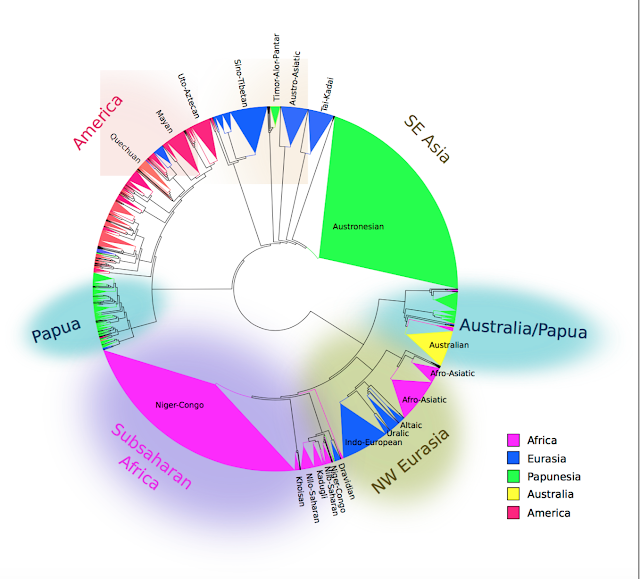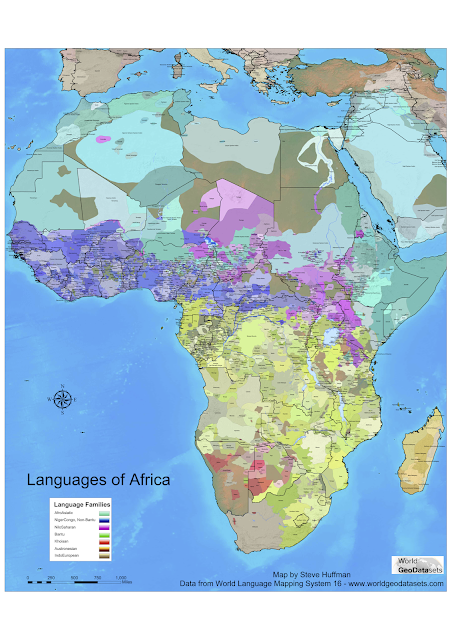Linguistic heads in profile
I happen to have a little collection of human heads in profile that are interesting linguistically. I don't have that much to say about them, but I think they're very nice so I'd like to share them with y'all.
1) Illustration of conversation in Ferdinand de Saussure's Cours de linguistique générale. This book was not written by Saussure and was published after his death. It was compiled by his students Charles Bally and Albert Sechehaye from lecture notes. This image is from the English edition, but I think it's the same in the French original. It's basically getting at the core of language, having an idea in one brain and then trying to transmit that same idea to another brain whilst lacking telepathy. There are more things language does, and most conversations are not only about transmission of information, but it is still at the core and this is one of the first illustrations of it.
2) The cover of Tage Danielsson's book Grallimmatik. This is a comedy book in Swedish about conversations and human behaviour written by a great comedian and satirist. I really like the illustration, which is why I've borrowed it as a profile pic for this blog sometimes. The illustration features Danielsson himself, most likely engaging in "struntprat" ("bullshit", "empty talk").
© Per Åhlin & Tage Danielsson
3) Mikael Parkvall's pedagogical illustrations of the speech apparatus. These images have been made by Mikael Parkvall of Stockholm Univeristy to illustrate articulation place in the oral cavity, and they do it very clearly. I especially like the vowel one, if you haven't seen anything like it before it will hep you a lot in understanding the IPA vowel chart. If you want to use these pictures, please contact him.
© Mikael Parkvall
© Mikael Parkvall
4) This brilliant animated illustration of the speech apparatus. I don't know who made this, and I'd really like to. I found it floating around tumblr unattributed. It is brilliant, it shows how the pulses from the glottis (vocal cords) travel through the cavities and out. The only think lacking is some sound out of the nose, considering that the tongue sure is not closing of the flow to the nasal cavities. It also is a bit weird that the pulses are present before the glottis, it should be a more steady flow and glottis that cuts off and lets out air. Oh well, anyway. It's a great gif.
5) Devanāgarī in the head. This one is also unattributed, unfortunately. It shows the head and the position of some of the relevant articulations places for the phonemes/letters of the Devanāgarī script. The accuracy on this one is less good, they've been pushed around to make place for the alphabet.
You see, articulatory phonetics are important when you're learning the Devanāgarī script. The consonants of the Devanāgarī script is traditionally read in the order of articulation place. First the velars, then the palatals and so on. In each place there are 5 sounds, 4 plosives and 1 nasal. First come the two unvoiced - one aspirated one unaspirated - then the voiced ones - same with the aspiration - and then comes the nasal. Next onto the following articulation place, same procedure. So you gotta know your articulatory features to figure it all out. Isn't that nice? Fricatives, liquids and vowels are not in a neat order though.
6) Lastly: my head. This is an image from an fMRI machine taken by a friend of mine, Valeria Petkova, at Karolinska in Stockholm. How is this linguistically relevant you ask? Well, it's a human head and in a sense it is always linguistically relevant, but this one also happens to be the head of a linguist and not just any linguist but the linguist making this post.










Comments
Post a Comment